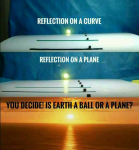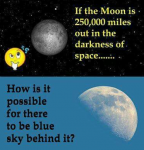I see.
It does interest me. I like to look at all the sides, it is so fun to do that, however it could take some time, maybe some day.

From what I have seen/learned, Flat Earth doesn't have a satisfying explanation for the heavenly bodies. If you start trying to determine if Earth is flat or a ball based on these, you will likely fall in favour of Heliocentricity. That's not to say Heliocentricity doesn't also have flaws, but they are more subtle than those with trying to explain Flat Earth theory (I have found).
It might help to look into Geocentrism first. Geocentrism is a poor man's Flat Earth (but the Earth is still a ball in the theory). There is no reason Geocentrism cannot be used for all mainstream science, other than the implications are philosophically unpleasant (to atheists) - if the Earth is the centre of the universe, it implies that we have some sort of importance (e.g. God created it and us!)
Malcolm Bowden doesn't like Flat Earth, but he explains Geocentrism quite well.
For everything measurable here down on Earth, I find Flat Earth wins out (e.g. distances to lighthouses, seeing beyond where the curve would be on a lake etc.)
To get you started, here are some simple questions, and the explanations required by Flat Earth theory vs. Heliocentric theory.
Why does the Earth seem motionless?
Flat Earther: Because it is motionless.
Heliocentrist: It only seems motionless because it's spinning at a perfectly uniform speed with no acceleration or deceleration ever and the atmosphere is magically velcroed to it. Actually the Earth is spinning on it's axis at 1,000 mph, rotating around the Sun at 67,000 mph, which is orbiting the Milky Way at 500,000 mph and shooting through the known Universe at 67,000,000 mph. We don't feel even the slightest bit of this motion because all the centrifugal, gravitational, and inertial forces somehow perfectly cancel out.
Why do the Sun and Moon appear to be the same size?
Flat Earther: Because they are the same size.
Heliocentrist: They only appear to be the same size because of an incredibly perfect parallax perspective from Earth. Actually the Sun is 1.392x10^6 km in diameter and 1.496x10^8 km from Earth. The Moon is 3,474 km in diameter and 384,403 km from the Earth. And these just happen to be the EXACT diameters and distances necessary for a viewer from Earth to falsely perceive them as being the same size.
Why do the Sun, Moon, and Stars all appear to revolve around a stationary Earth?
Flat Earther: Because they do.
Heliocentrist: The Moon does revolve around the Earth, but the Earth actually revolves around the Sun, and all the stars only seem to revolve around the Earth because the Earth itself is spinning beneath your feet!
Why do we never see the rotation of the Moon?
Flat Earther: Because it doesn't rotate.
Globalist: Both the Moon and the Earth are actually rotating but they are doing so in such a way that from our perspective it seems that neither are. The Earth is spinning East to West at 1,000 mph while orbiting the Sun at 67,000 mph. The Moon is spinning West to East at 10.3 mph while orbiting the Earth at 2,288 mph. These motions/speeds perfectly cancel out so that the Moon always only shows us one side.
Why do the stars appear to be fixed along a celestial hemisphere?
Flat Earther: Because they are.
Heliocentrist: The stars only appear to be fixed along a celestial hemisphere because they are so incredibly far away. Even after hundreds of millions of miles of our (supposed) orbit around the Sun, the stars appear in the exact same positions at the exact same meridian times because they are many "light-years" away. A light-year is approximately 6 TRILLION miles away and that is why they falsely seem fixed from our faulty perspective.
1
1




